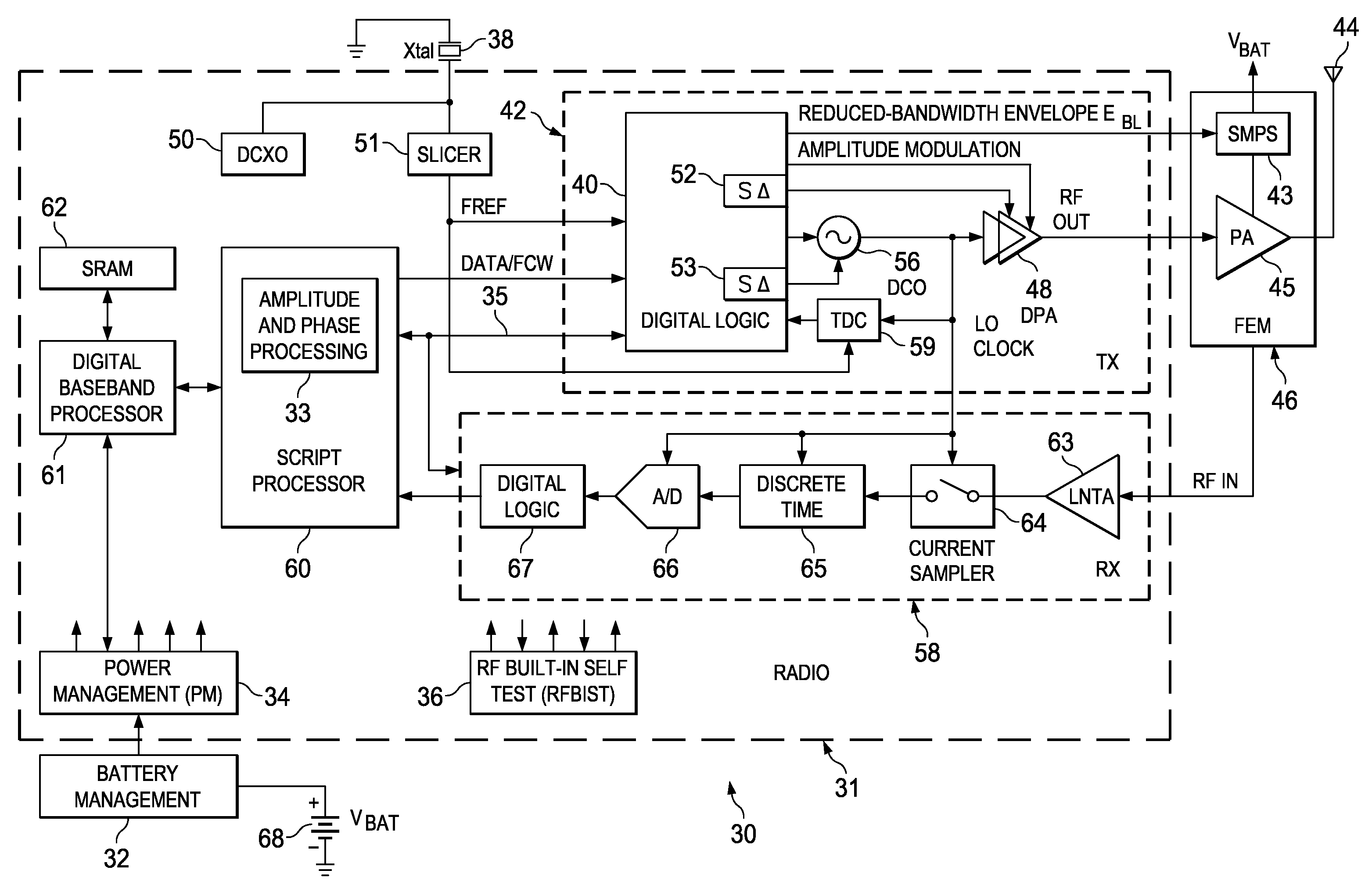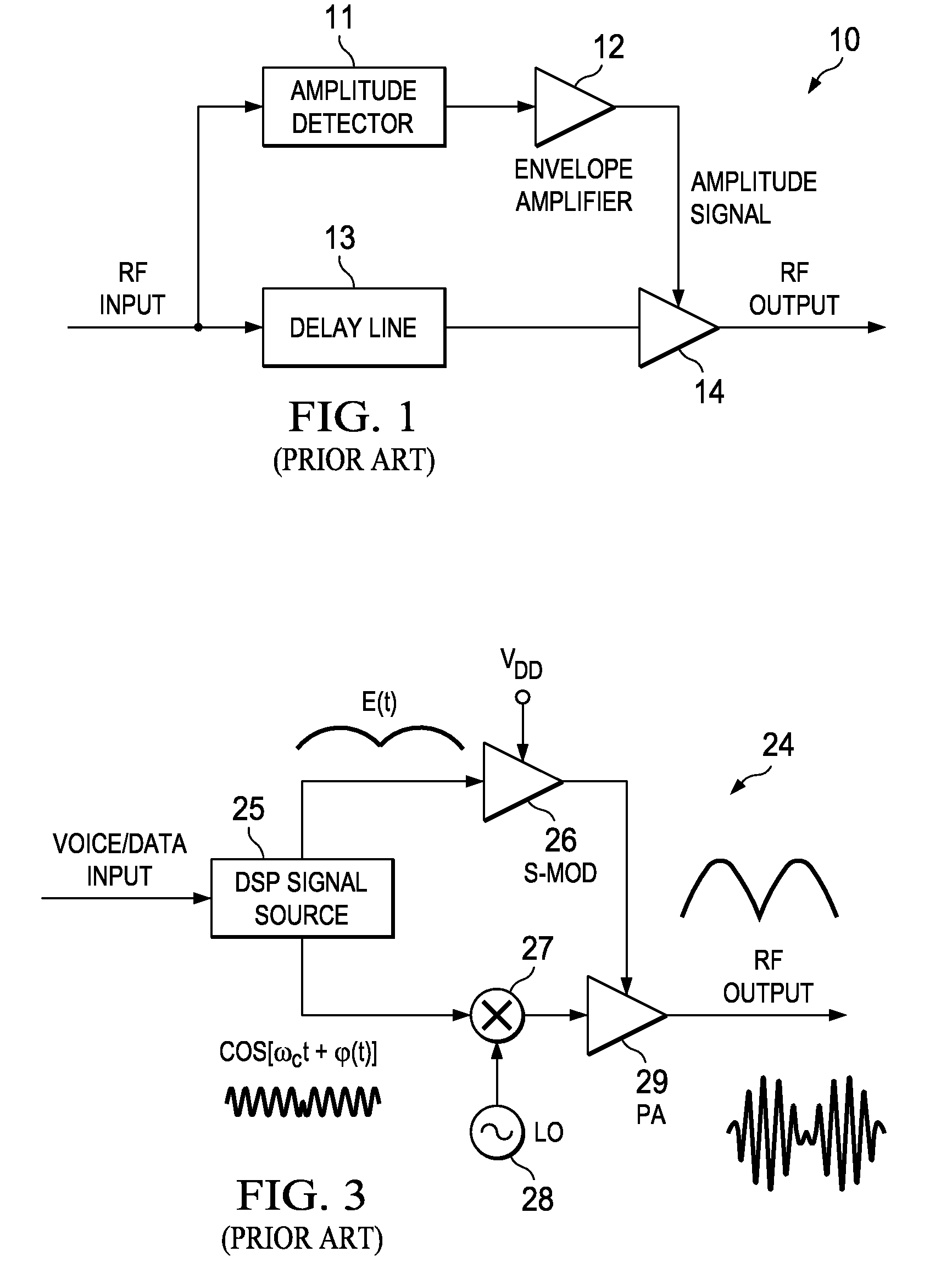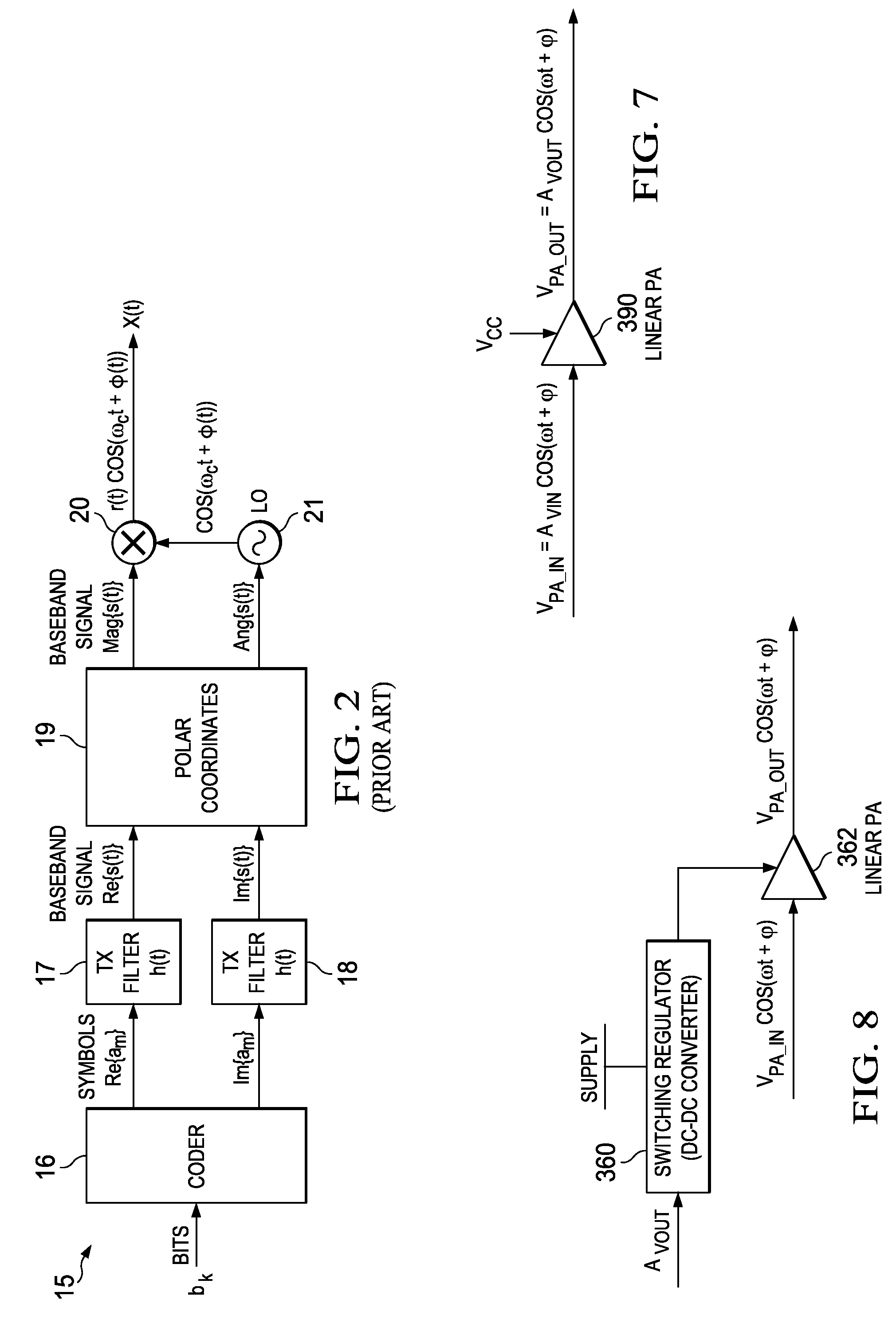High efficiency digital transmitter incorporating switching power supply and linear power amplifier
a digital transmitter and linear power amplifier technology, applied in the field of data communication, can solve the problems of high switching efficiency, am-am and am-pm distortion, and high switching noise, and achieve the effects of improving power efficiency of a transmitter, reducing bandwidth envelope, and improving power efficiency
- Summary
- Abstract
- Description
- Claims
- Application Information
AI Technical Summary
Benefits of technology
Problems solved by technology
Method used
Image
Examples
first embodiment
[0112]In a first embodiment, sufficient headroom is maintained in the linear power amplifier such that the reduced-bandwidth envelope signal is used alone (i.e. without any predistortion) to improve power efficiency. In this embodiment, the linear power amplifier is configured to have sufficient headroom to minimize any saturation / distortion.
second embodiment
[0113]In a second embodiment, the reduced-bandwidth envelope signal is used in combination with some type of pre-compensation. The compensation is used to compensate for supply-dependent distortions suffered in the power amplifier as a result of the headroom occasionally being too low to maintain perfect linearity (particularly around the highest peaks in the envelope). Compensation comprises amplitude and phase predistortions that are applied to the PA input signal. The predistortions may be implemented either (1) using a look up table (LUT) populated with predistortion correction values; or (2) a polynomial or equivalent that is calculated to determine the appropriate predistortion to apply for a particular input.
[0114]In the second embodiment, the digital signal processing portion of the mechanism of the invention accounts for the supply-dependent distortions suffered in the power amplifier and compensates for them by predistorting the PA input signal in a feed-forward manner. Th...
third embodiment
[0116]In a third embodiment, a form of feedback, based on continuous monitoring and detection of the power-amplifier's output signal, is used to adjust the envelope and phase of the internal modulation, and possibly also the envelope used for the supply modulation (i.e. the signal applied at the input to the regulator). Although an efficient negative feedback system may substitute for the feed-forward predistortion altogether, in the presence of reasonably accurate feed-forward predistortion, the errors for the feedback system would be reduced and the finite suppression offered by the feedback system for these errors will be able to meet the requirements of the particular wireless standard with less effort (e.g., reduced bandwidth in the closed-loop control system). In this case, circuitry, computation and energy efficiency may be optimized as the effort is distributed between the two paths.
[0117]The end result for the system is that the desired RF performance is obtained for the tr...
PUM
 Login to View More
Login to View More Abstract
Description
Claims
Application Information
 Login to View More
Login to View More - R&D
- Intellectual Property
- Life Sciences
- Materials
- Tech Scout
- Unparalleled Data Quality
- Higher Quality Content
- 60% Fewer Hallucinations
Browse by: Latest US Patents, China's latest patents, Technical Efficacy Thesaurus, Application Domain, Technology Topic, Popular Technical Reports.
© 2025 PatSnap. All rights reserved.Legal|Privacy policy|Modern Slavery Act Transparency Statement|Sitemap|About US| Contact US: help@patsnap.com



